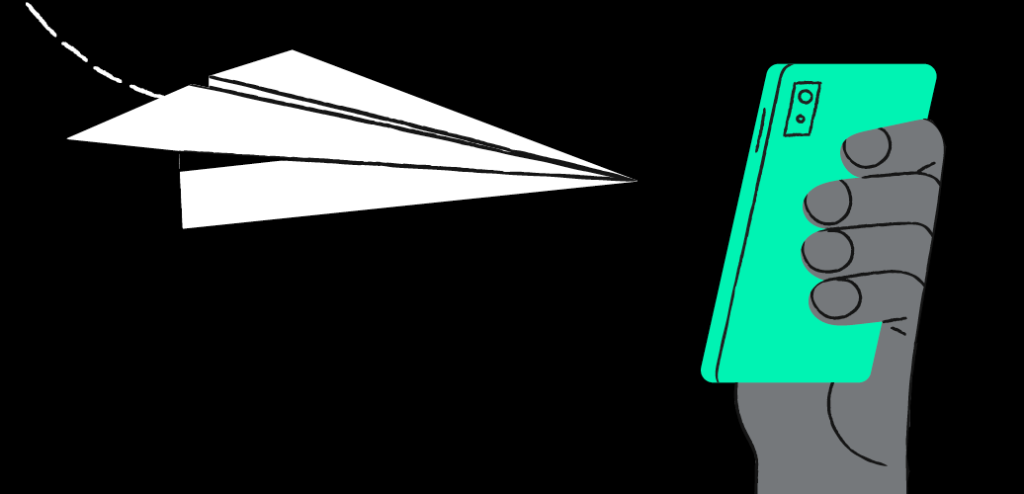You can achieve a lot with your money in a little time, including kick-starting your savings. Using the SMART approach to provide intention to saving can help you build stronger money habits that align with your values.
The SMART approach is a framework for setting specific, measurable, achievable, relevant and time-bound goals. When you're feeling uncertain about how to save money fast, applying this method to the saving process can help you get unstuck and take action.
Set SMART financial goals
The idea of changing your habits and routines to save more money—especially when you want to make major changes to achieve fast results—can be challenging. We all get used to being comfortable, and it can be hard to get excited about spending less or working more. Reminding yourself of your "why" and envisioning how your life will be better after reaching your goal can help boost motivation.
The first key to
- "I'd like to save for a house down payment."
- "I want safety, space and stability for our family, and I see homeownership as a way to achieve that. I've identified the neighborhood where I want to raise my family and know the home prices there. For the next three years, I'm putting $500 a month into a money market account for a down payment so we can buy a place before our son starts kindergarten. I know we can do it if we shift more of our food spending from restaurants to groceries, take road trips instead of flying for vacations and postpone buying a new car."
The first statement doesn't identify your why or create a plan to reach your goal. But the second statement clarifies the values motivating your goal. It gets specific about where you want to live, how soon you want to live there, how much you need to save to make it happen and where that money will come from.
Here's how to clarify your financial goal into a SMART one. Identify what you want to accomplish, and then ask yourself:
- Is it specific? Consider the who, what, where, when and why of the goal.
- Is it measurable? Being able to quantify your progress lets you celebrate when you gain ground and course-correct when you don't.
- Is it achievable? Review how realistic your goals are, especially as they fit into the rest of your finances.
- Is it relevant? Define why the goal means something to you, so you're motivated by your values and purpose.
- Is it time-bound? Setting a time limit helps your goal feel more deadline-driven and gives you a hard date to work toward.
Once you've set your goal, write it down and start tracking your progress.
7 tips to save money faster
Once you have a purpose-driven mindset and clear financial objectives, you're ready to take action. It's time to learn how to save money fast for specific goals.
1. Prioritize savings with "pay yourself first"
Instead of saving what's left at the end of the month, embrace the
- Treat your savings like a bill. You plan for and pay certain non-negotiable expenses, like your rent or mortgage, each month. You can treat savings account contributions the same way. Choose an amount you can comfortably stick to each month without missing essential bills.
- Automate your savings deposits. Set up automatic transfers from your paycheck to your savings account each payday. This approach ensures you're saving something every pay period. Some people even keep their savings in a separate bank so it's out of sight and harder to spend.
2. Organize your money with a budget
Paying closer attention to your finances can make saving money simple. These three steps can help you budget more efficiently:
- Track your spending. The first step is to track all of your income and expenses each month. It's a vital part of
budgeting basics, and it lets you discover how you use your money. - Identify ways to reduce nonessential expenses. Once you know where your money is going, you can look for
types of spending that are lower priorities than your savings goal and reduce or eliminate them. - Use budget tools. Choose a budgeting method. Some popular
types of budgets include:The 50/30/20 system, where you divide your budget into needs, wants and savings. This approach offers several variations you can try.Zero-based budgeting, which allocates every dollar of your income to specific expenses and savings. This may be a good fit if you enjoy precision.Envelope budgeting, in which you physically place cash in envelopes marked for a specific purpose. This is a hands-on way to divide and distribute your money.No-budget budgeting, where you set aside a fixed portion of your income for savings, then pay out your fixed expenses. What remains can be used however you like.
Start with whichever method you think you're most likely to stick to. Once you experience the
And don't be afraid to ask for help:
3. Lower monthly bills and keep more cash
Every dollar you cut from your recurring bills allows you to increase your savings month after month. Here are some strategies to try:
- Reduce energy consumption. Lower your heating and cooling bills while keeping your home comfortable by looking for inefficiencies. Start by checking your HVAC filter and replacing it if it's dirty. Add calendar reminders to check it every month. Find gaps around windows and doors that you can seal with weatherstripping to keep indoor temperatures consistent. And use a programmable thermostat so you don't overcool or overheat your home.
- Shop around for better deals. If it's been a year or more since you checked competitors' pricing on your internet, cable and phone bills, see how much you could save by switching. Check out low-cost mobile virtual network operators for cellphone service, fiber-optic internet service providers and streaming television packages that replace traditional cable.
- Negotiate with service providers. Negotiate a lower rate with existing providers by letting them know you need to cut costs. Many providers are willing to offer deals if they recognize you may cancel service otherwise.
- Automate bill payments. Avoid late fees by automating recurring payments such as auto loans, credit cards, insurance and utilities. Keep a cushion in your bank account so you aren't charged fees for insufficient funds.
4. Plan big purchases around sales to maximize savings
The savviest purchase is often the one you never make. But for necessary purchases or the occasional fun item that fits your budget, make bargain shopping a habit.
- Use shopping strategies. If you know there's a large, necessary purchase coming up for your household, like a new refrigerator, research when the item typically goes on sale. Holiday events and end-of-season clearances are usually a great time to buy.
- Buy used or refurbished. Buying brand-new items often means paying more and sometimes means getting a less-durable product. Yard sales and used appliance stores can offer serious bargains. So can watching online repair videos, ordering replacement parts and fixing things yourself. You might be shocked by how easy the solution is.
5. Choose the right credit card for your needs
Whether you want to pay down debt or make the most of your regular spending, getting the right credit card can be one of the biggest secrets to saving money.
- Understand credit card fees and interest rates. Some credit cards charge an annual fee. If you aren't getting at least as much value out of the card's perks, ask your issuer about downgrading to a no-fee version of the card. If you can't, consider closing it after redeeming any associated points, miles or cash back.
- Manage credit card balances: If you're carrying a balance, moving from a high-rate card to a low-rate card means you can get out of debt faster for the same monthly payment. It's often possible to get a new card with a 0% introductory APR and a 3% or 5% balance transfer fee.
- Consider credit cards with cash back and rewards. Most credit cards offer cash back, points or miles on every purchase. Cash back rewards are the most straightforward, while points offer the most flexibility. Keep an eye out for valuable welcome offers when applying for a new card. However, earning points, airline miles or cash back could be negated if you carry a balance each month. Avoid the temptation to spend just because you may earn special perks.
6. Review insurance options
When things go wrong, you want robust coverage from a financially strong insurer. Being properly insured is crucial when you're trying to accumulate savings. But that doesn't mean you need to overpay.
- Find the right coverage options. What your policies cover, and for how much, can impact your rates. When shopping insurance companies, compare the cost of coverage options first before deciding to reduce features.
- Look for cost savings. Bundling multiple policies with the same company may provide an up-front premium reduction. Improving your credit rating may provide a long-term reduction.
7. Boost your income with a side hustle
If changing jobs isn't an option and you aren't eligible for a raise or promotion, you could pursue a secondary income stream to support your savings goals. To make it sustainable, look for flexible options that fit your schedule and match your skills and interests.
- Review your side hustle options. Brainstorm a list of every side hustle you might be able to do, then narrow it down to the most appealing options. Popular side hustles include:
- Driving for a rideshare service
- Delivering food
- Tutoring
- Freelancing
- Consulting
- Running errands
- Cleaning
- Pet-sitting or dog-walking
- Selling unwanted items
- Participating in focus groups and research studies
- Buying undervalued items and selling them at a profit (sometimes, after refurbishing them)
- Turn a passion into something profitable. What do you enjoy so much that you do it for free but are talented enough that people would pay for it? Maybe you've taken amazing candid shots of your friends' kids and could start charging clients for family photos. Perhaps you're an expert in the flora, fauna and geology of your area and could lead guided hikes. Think about what hobbies or passions you have and how you could monetize them.
Maximize your savings with compounding interest
Accumulating savings can be challenging, so make the money you save work harder for you. Here are some ways to earn more interest and grow your savings through compounding.
- Choose the right savings account. Some savings accounts pay a scant interest rate while others pay quite a bit more and are just as safe. Because inflation erodes the value of a dollar each year, it's important to keep your money in an account that helps your savings keep up with inflation by paying more interest. Choose a proven brand, and make sure the account has FDIC or NCUA coverage. Also, know that it's OK to have
multiple savings accounts. - Explore other savings options. A
certificate of deposit (CD) may offer an enticing interest rate, especially if you're a new customer. You'll often be penalized if you close your CD before it matures, though, so it's important to choose yourCD term carefully and match it to when you expect to need your money.Money market funds andmoney market accounts also can offer competitive rates—and they can be a good place for anemergency fund.
Get more tips:
Celebrate successes & stay motivated
Creating a savings habit starts with a clear plan and setting SMART financial goals. Understanding your priorities and how they fit into your budget is a great first step. Then, align your savings strategy with well-defined goals to ensure every financial decision moves you toward your objectives and helps you save money faster.
Connect with a







